Visual-Based Multi-Section Welding Path Generation Algorithm
Abstract
:1. Introduction
2. Problem Description
2.1. Introduction of Steel Component Groove
- (1)
- The welding method is carbon dioxide gas-shielded welding.
- (2)
- There are many types of grooves, including K-, V-, U- and Unilateral V-type grooves, etc.
- (3)
- Due to machining error, assembly error, deformation and other factors, the grooves used on construction mostly have changed in geometry compared to expectations, becoming non-standard grooves.
2.2. Classification of Non-Standard Grooves
- (1)
- Shape distortion of groove
- (2)
- Non-uniform variation of bottom clearance changes in a small range
- (3)
- Unidirectional linear variation of bottom clearance
3. System Scheme and Detection System
3.1. System Scheme of Non-Standard Groove Automatic Welding and Material Additive Manufacturing System
3.2. Detection System
3.2.1. Selection of Detection Scheme
- (1)
- The area to be monitored is a narrow rectangular area and the depth of the area does not exceed 150 mm;
- (2)
- The steel components themselves have been inspected for quality and their shapes are regular. There are no surface defects that will affect the welding operation;
- (3)
- The welding operation itself will emit a lot of heat and light due to the bad illumination conditions at the work site.
- (1)
- Strong ability to detect simple geometric shapes;
- (2)
- Strong anti-jamming ability to strong light and heat;
- (3)
- Small size, lightweight, and easy to move.
3.2.2. Principle of Laser Triangulation
3.2.3. Detection Bench and Image Process
- (1)
- Clipping image
- (2)
- Contrast enhancement
- (3)
- Noise Removal by Filtering and Threshold Segmentation
- (4)
- Extraction of Bar Center
- (5)
- Extraction of Feature point coordinate
4. Generation Algorithm of Groove Welding Path Based on Multi-Section Interpolation
4.1. Establishment of Groove Mathematical Model According to Welding Characteristics
4.2. Extraction of Groove Geometry Information
4.3. Setting of Welding-Related Parameters
4.4. Calculation of Specific Path Coordinates
- (1)
- Calculation of Layer Number of Weld Bead
- (2)
- Calculate the number of paths per layer
- (3)
- Calculating the coordinates of each weld path in a single section
4.5. Multi-Section Method for Welding Path Planning
4.6. Approach of Non-Standard Groove Welding
5. Experiments and Results
5.1. Experimental Scheme
5.2. Detection Bench and Images Processes
5.3. Simulation Results
- (1)
- Make sure that each layer of bead and edge are closely occluded;
- (2)
- The bead can be adaptively filled into the groove with linear change of gap in one direction without overlapping in space;
- (3)
- The distance between beads should be controlled in a reasonable range, so that the distance between beads would not be too close.
5.4. Experimental Process
5.5. Welding Results
5.5.1. Welding Bead Distribution
5.5.2. Welding Bead Lap Joints
5.5.3. Welding Bead Quality
6. Conclusions
- (1)
- An intelligent automatic welding equipment system with functions from detecting welding track generation to completing welding operation was built;
- (2)
- Choose the appropriate visual inspection scheme, inspect the groove, process the image, and obtain the coordinates of feature points of non-standard groove with multi-section;
- (3)
- The coordinates of non-standard groove multi-section feature points obtained by the detection system are imported into the algorithm of path generation, and the path of welding torch is obtained;
- (4)
- The results of welding experiment are in good agreement with the planned results;
- (5)
- The filling of weld seam and edge occlusion effect are good. Welding according to the path generated by the algorithm can meet the quality requirements.
Author Contributions
Funding
Conflicts of Interest
References
- Keane, M.J.; Siert, A.; Chen, B.T.; Stone, S.G. Profiling mild steel welding processes to reduce fume emissions and costs in the workplace. Ann. Occup. Hyg. 2014, 58, 403–412. [Google Scholar] [PubMed] [Green Version]
- Keane, M.J.; Siert, A.; Stone, S.; Chen, B.; Slaven, J.; Cumpston, A.; Antonini, J. Selecting processes to minimize hexavalent chromium from stainless steel welding. Weld. J. 2012, 19, 241–246. [Google Scholar]
- Wang, J.; Kalivoda, M.; Guan, J.; Theodore, A.; Sharby, J.; Wu, C.-Y.; Paulson, K.; Es-Said, O. Double shroud delivery of silica precursor for reducing hexavalent chromium in welding fume. J. Occup. Environ. Hyg. 2012, 9, 733–742. [Google Scholar] [CrossRef] [PubMed]
- Norberto, P.J.; Bölmsjo, G.; Loureiro, A. Welding robots: Technology, system issues and applications. Ind. Robot 2005, 10, 45–55. [Google Scholar]
- Micallef, K.; Fang, G.; Dinham, M. Automatic seam detection and path planning in robotic welding. In Lecture Notes in Electrical Engineering; Springer: Berlin/Heidelberg, Germany, 2011; pp. 23–32. [Google Scholar]
- Xu, Y.; Yu, H.; Zhong, J.; Lin, T.; Chen, S. Real-time seam tracking control technology during welding robot GTAW process based on passive vision sensor. J. Mater. Process. Technol. 2012, 212, 1654–1662. [Google Scholar] [CrossRef]
- Bračun, D.; Sluga, A. Stereo vision based measuring system for online welding path inspection. J. Mater. Process. Technol. 2015, 223, 328–336. [Google Scholar] [CrossRef]
- Boillot, J.P.; Noruk, J. The benefits of laser vision in robotic arc welding-Laser vision weld inspection can help reduce destructive testing costs. Weld. J. 2002, 32–34. [Google Scholar]
- Hiramoto, S.; Moriyasu, M.; Ohmine, M. Development of a multipass welding program for arc welding robots and its application to heavy electrical components. Weld. Int. 1992, 6, 26–31. [Google Scholar] [CrossRef]
- Tang, X.-H.; Drews, P. 3D-visualized offline-programming and simulation system for industrial robots. Trans. China Weld. Inst. 2005, 2. [Google Scholar]
- Chen, S.B.; Zhang, Y.; Qiu, T.; Lin, T. Robotic welding systems with vision-sensing and self-learning neuron control of arc welding dynamic process. J. Intell. Robot. Syst. 2003, 36, 191–208. [Google Scholar] [CrossRef]
- Yang, C.; Ye, Z.; Chen, Y.; Zhong, J.; Chen, S. Multi-pass path planning for thick plate by DSAW based on vision sensor. Sens. Rev. 2014, 34, 416–423. [Google Scholar] [CrossRef]
- Ye, Z.; Fang, G.; Chen, S.; Zou, J.J. Passive vision based seam tracking system for pulse-MAG welding. Int. J. Adv. Manuf. Technol. 2013, 67, 1987–1996. [Google Scholar] [CrossRef]
- Fan, C.; Lv, F.; Chen, S. Visual sensing and penetration control in aluminum alloy pulsed GTA welding. Int. J. Adv. Manuf. Technol. 2009, 42, 126–137. [Google Scholar] [CrossRef]
- Kovnatsky, A. Feature points in image, keypoint extraction. Org. Biomol. Chem. 2009, 7, 2077–2081. [Google Scholar]
- Li, B.; Mu, C.; Wang, T.; Peng, Q. Revised version of a JCIT paper-comparison of feature point extraction algorithms for vision based autonomous aerial refueling. arXiv 2014, arXiv:1405.6163. [Google Scholar]
- Yuba, Y.; Hirai, H.; Tsutsumi, K.; Watari, K. Rotated checker-pattern projection and its cross-point extraction and tracking for 3-D object profilometry. Syst. Comput. Jpn. 2010, 20, 53–61. [Google Scholar] [CrossRef]
- Sorokin, D.V.; Mizotin, M.M.; Krylov, A.S. Gauss-laguerre keypoints extraction using fast hermite projection method. In International Conference Image Analysis and Recognition; Springer: Berlin/Heidelberg, Germany, 2011; pp. 284–293. [Google Scholar]
- Hu, X.; Zhang, Z.; Li, J. Linear feature extraction using adaptive least-squares template matching and a scalable slope edge model. Int. J. Remote Sens. 2009, 30, 3393–3407. [Google Scholar] [CrossRef]
- Hochstenbach, M.E. Harmonic and refined extraction methods for the singular value problem, with applications in least squares problems. Bit Numer. Math. 2004, 44, 721–754. [Google Scholar] [CrossRef]





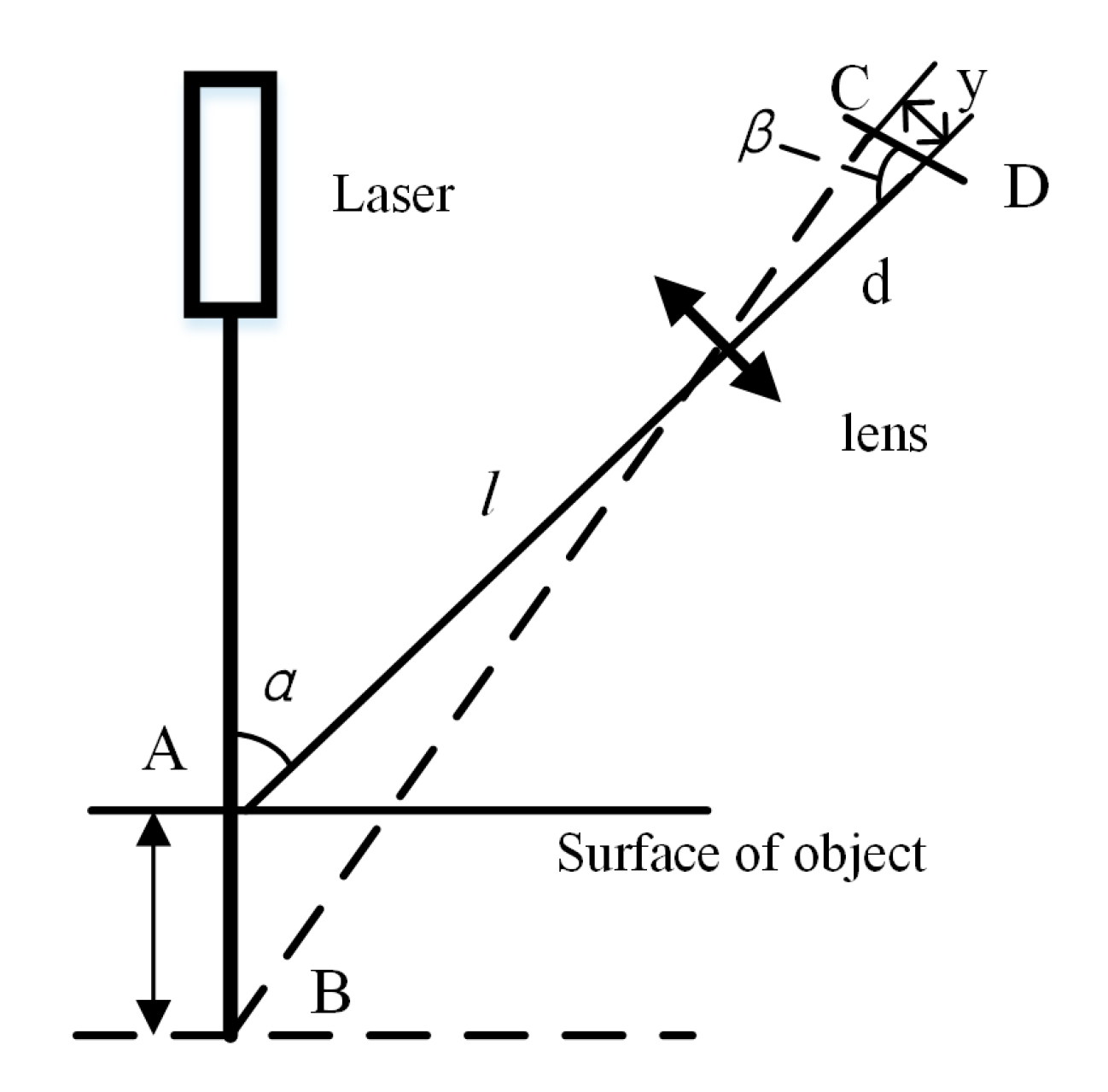
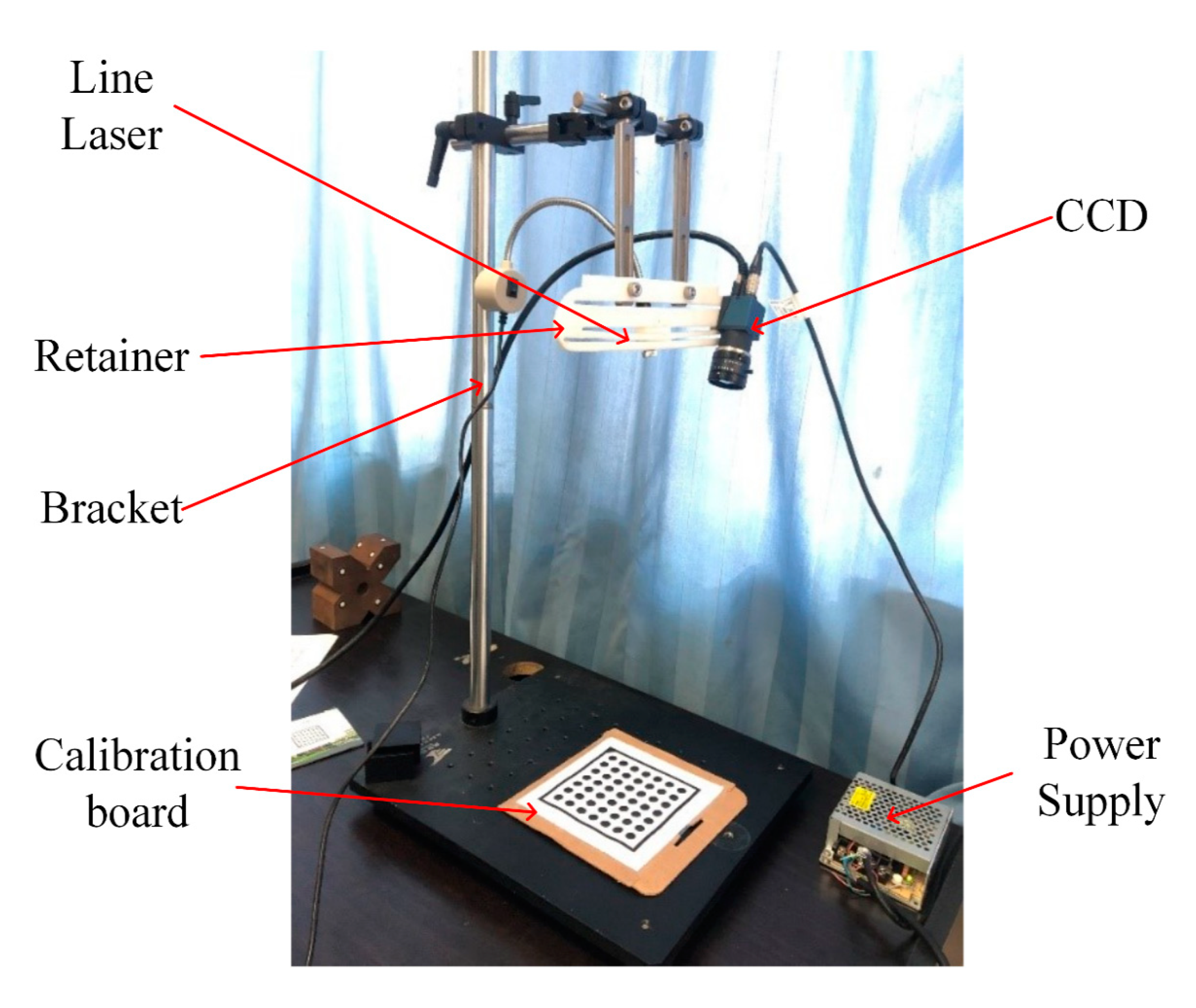

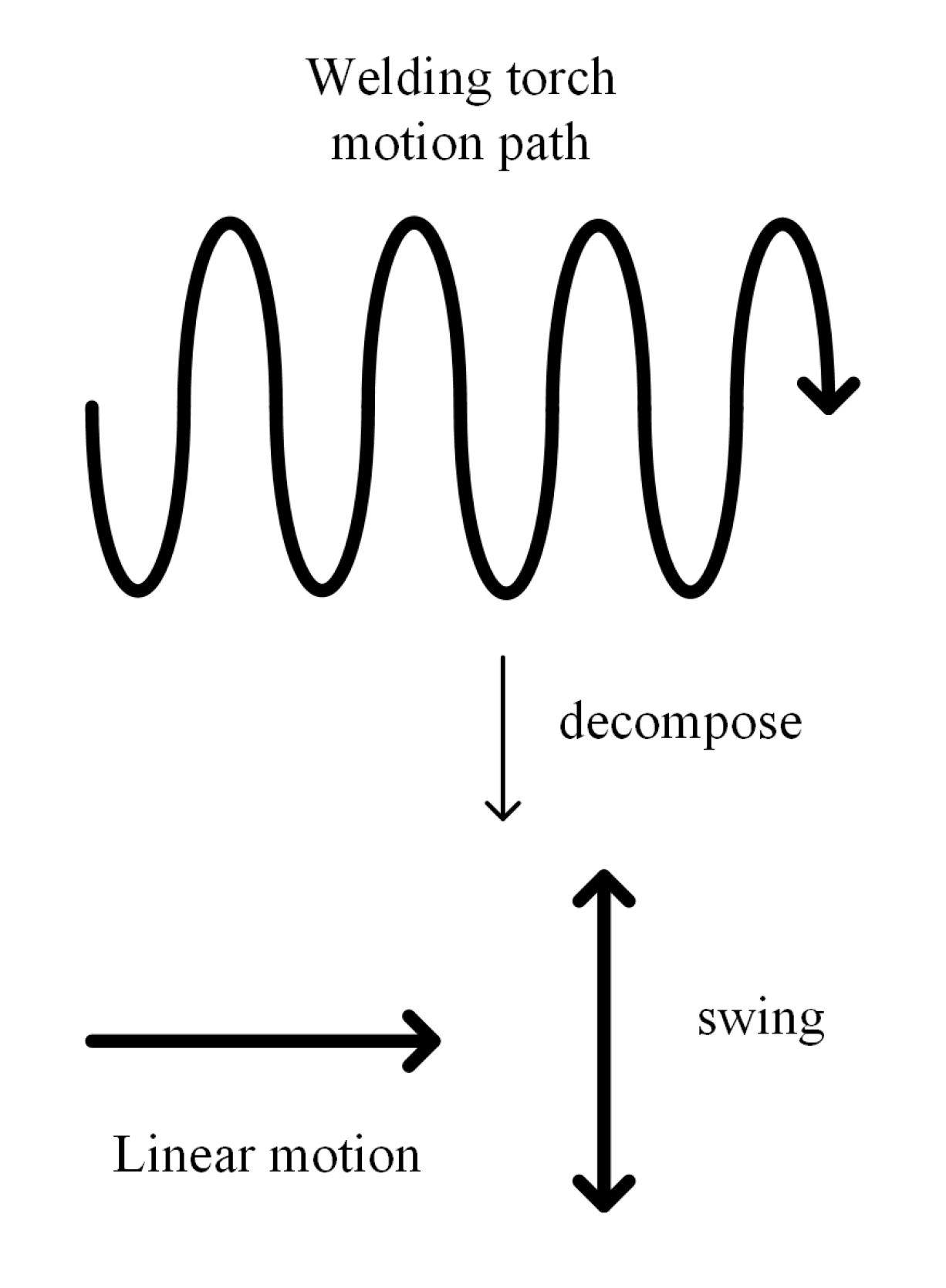
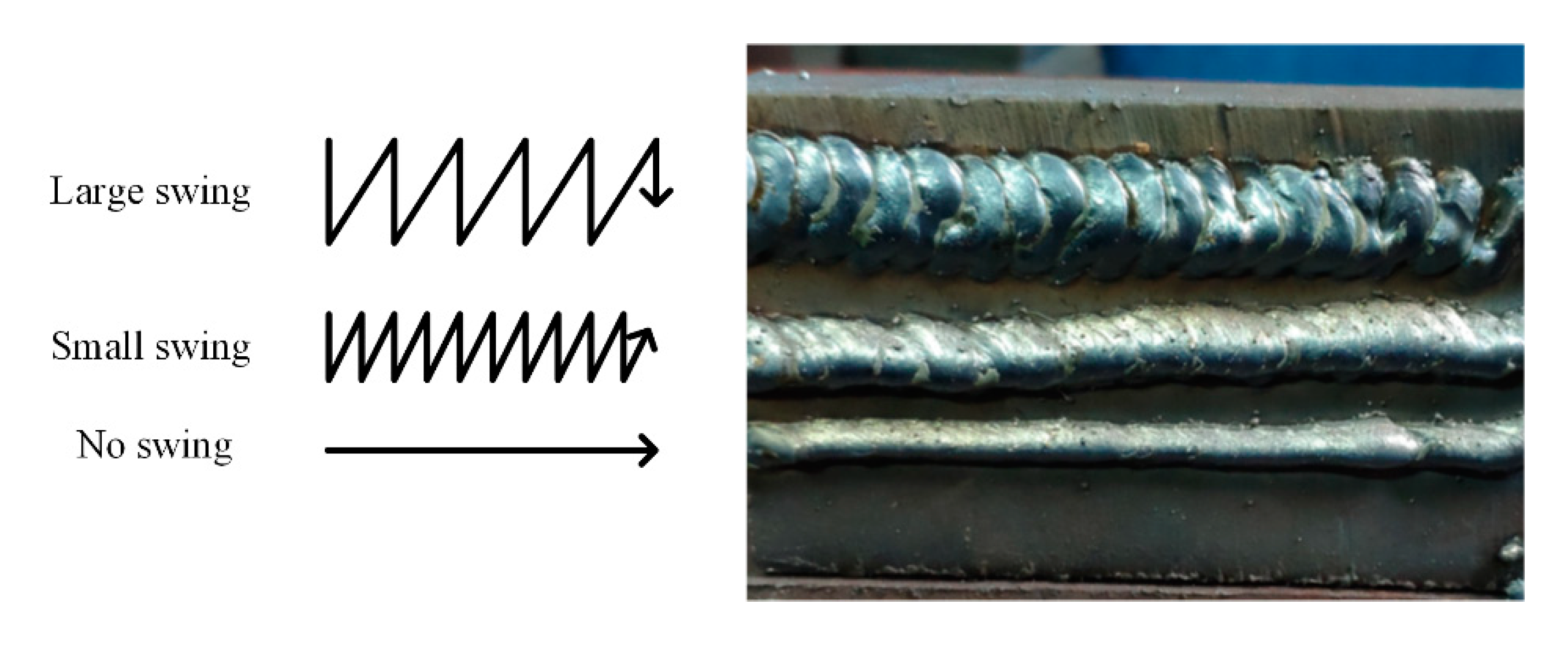


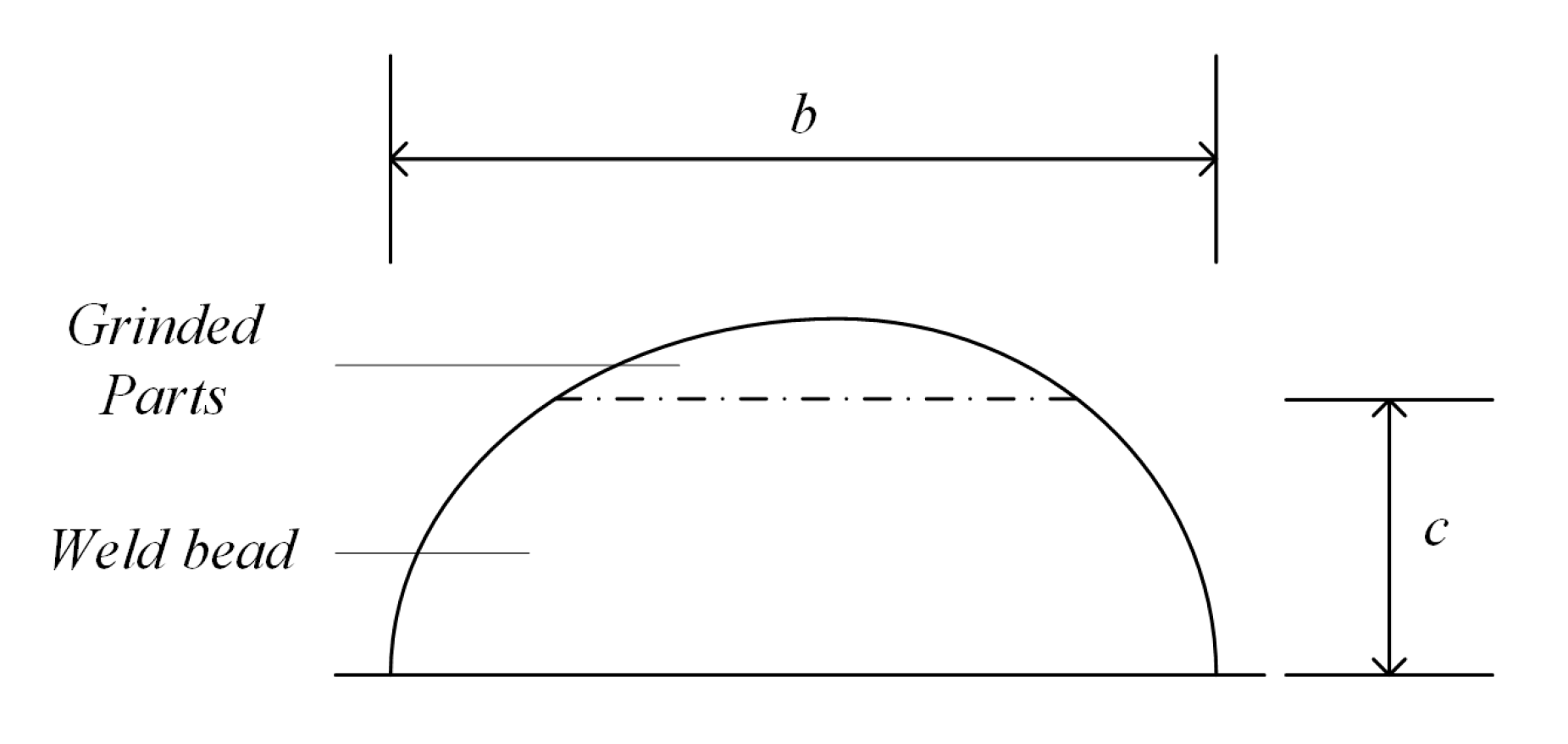
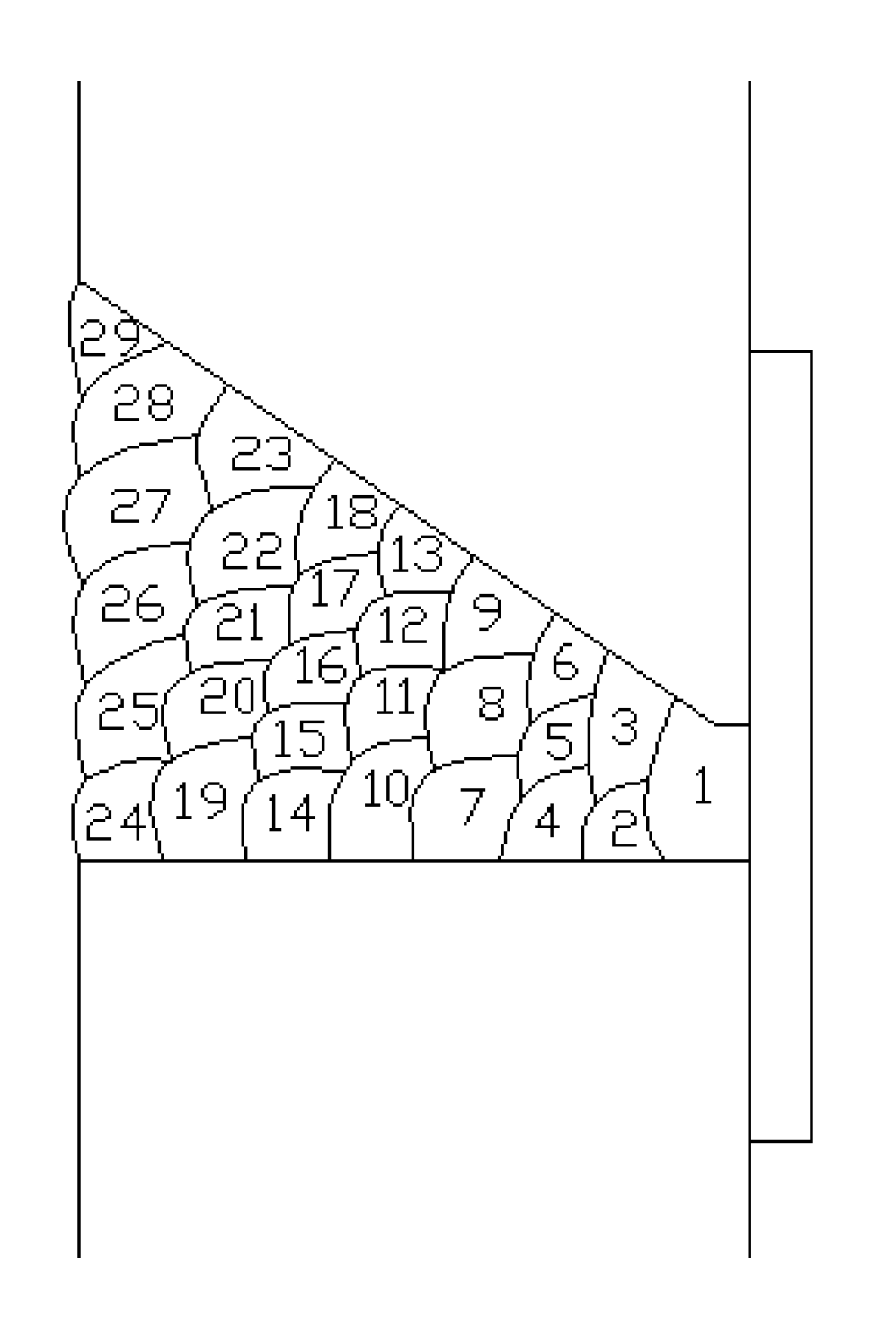


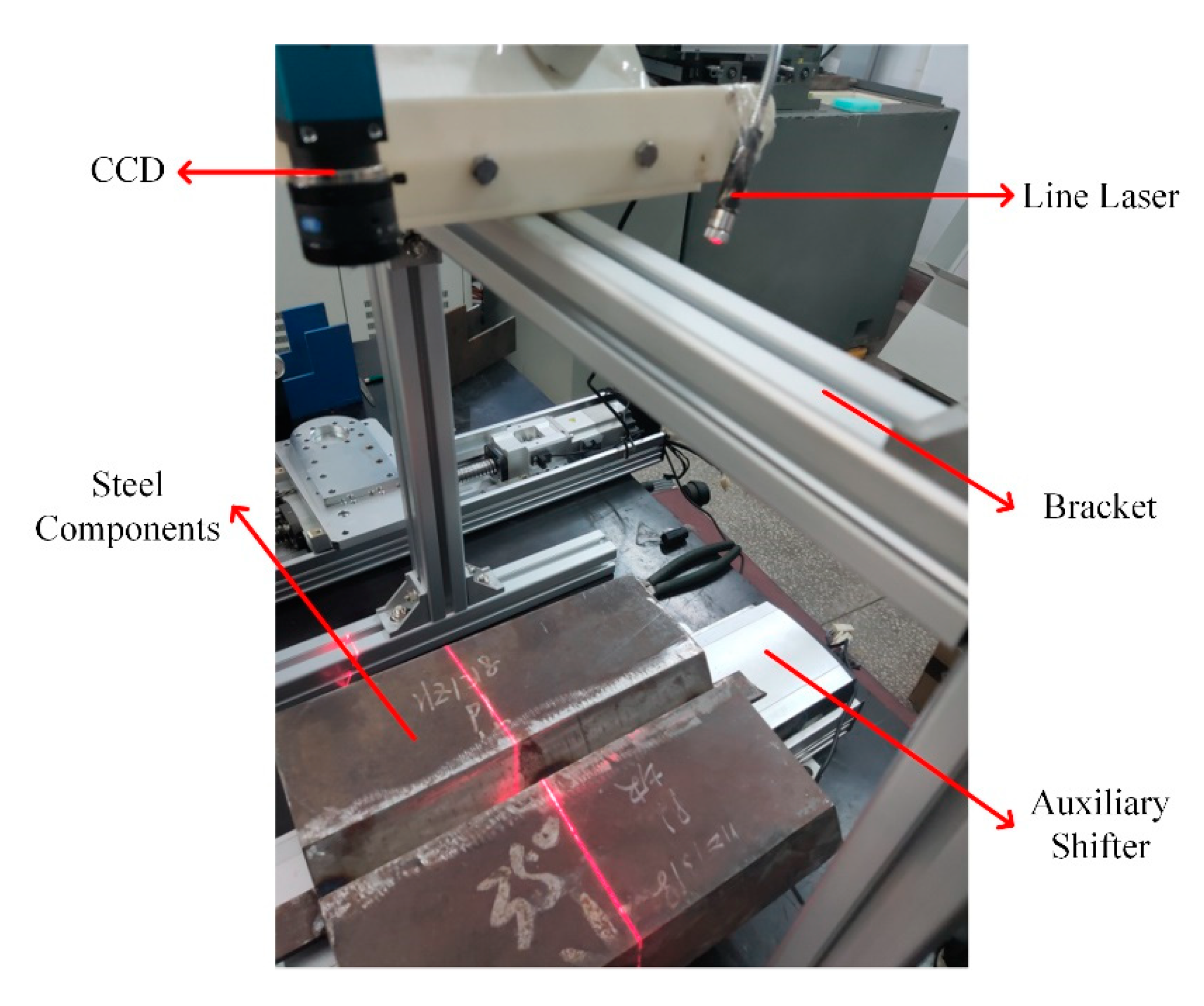
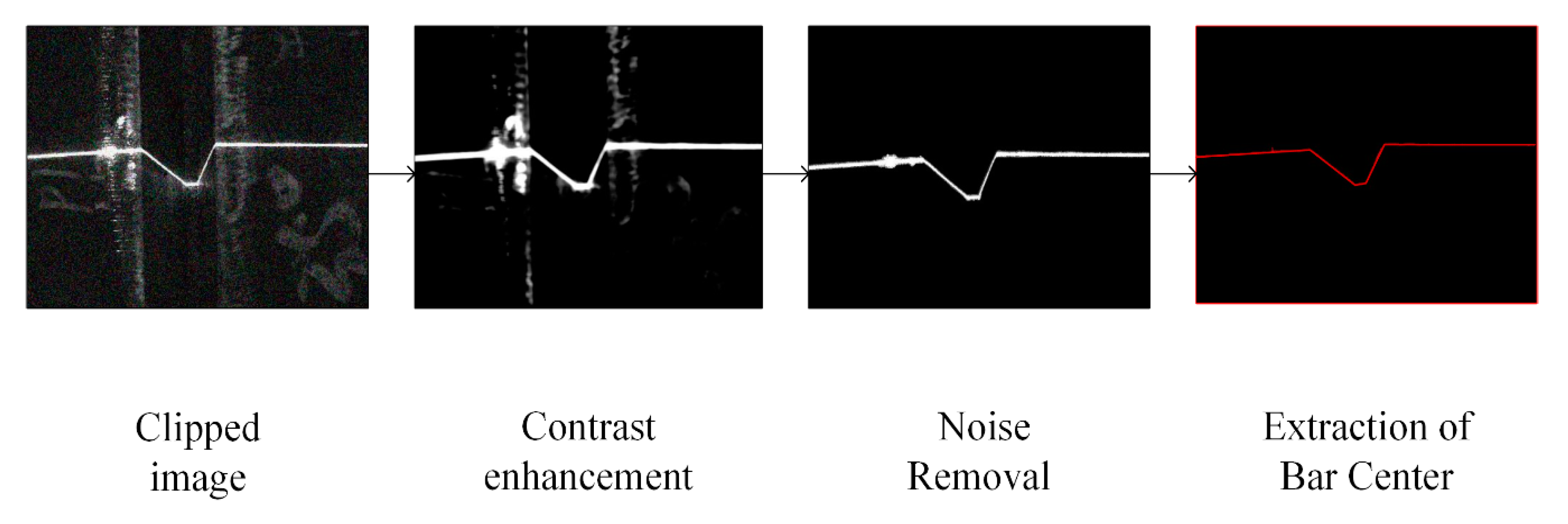
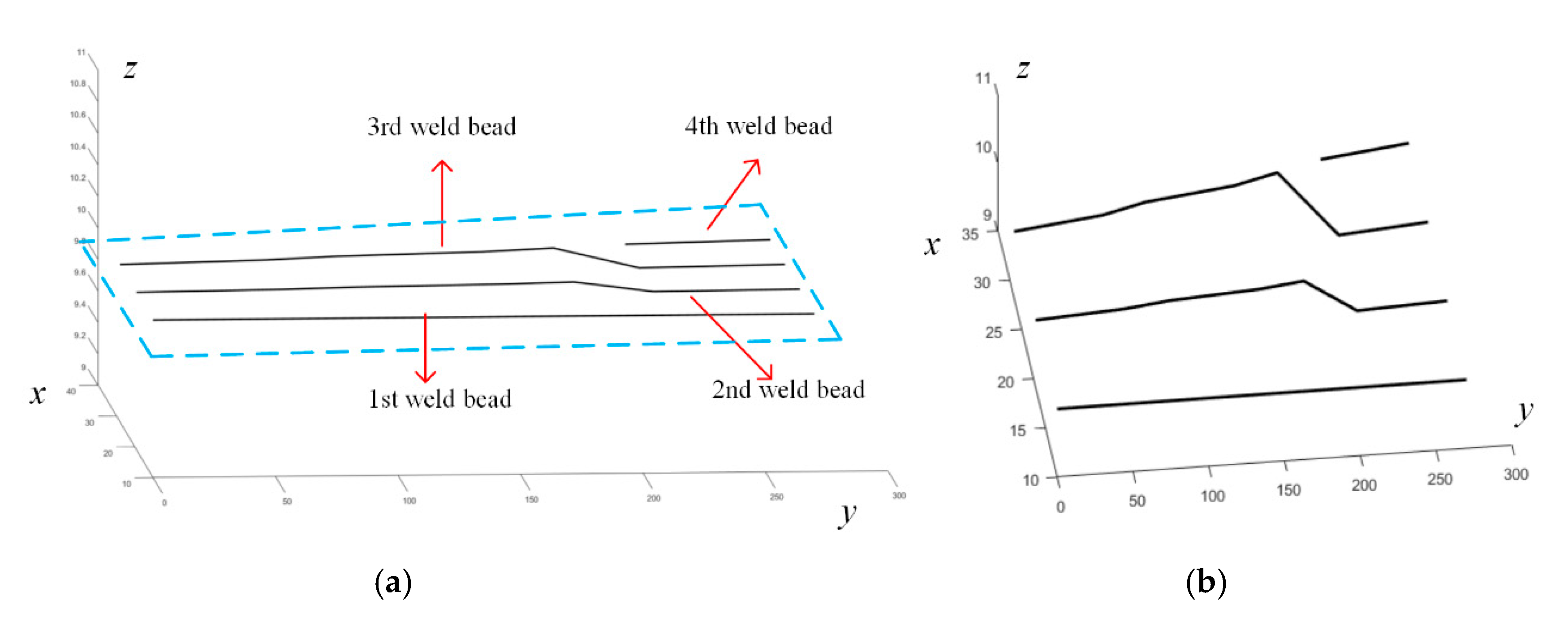


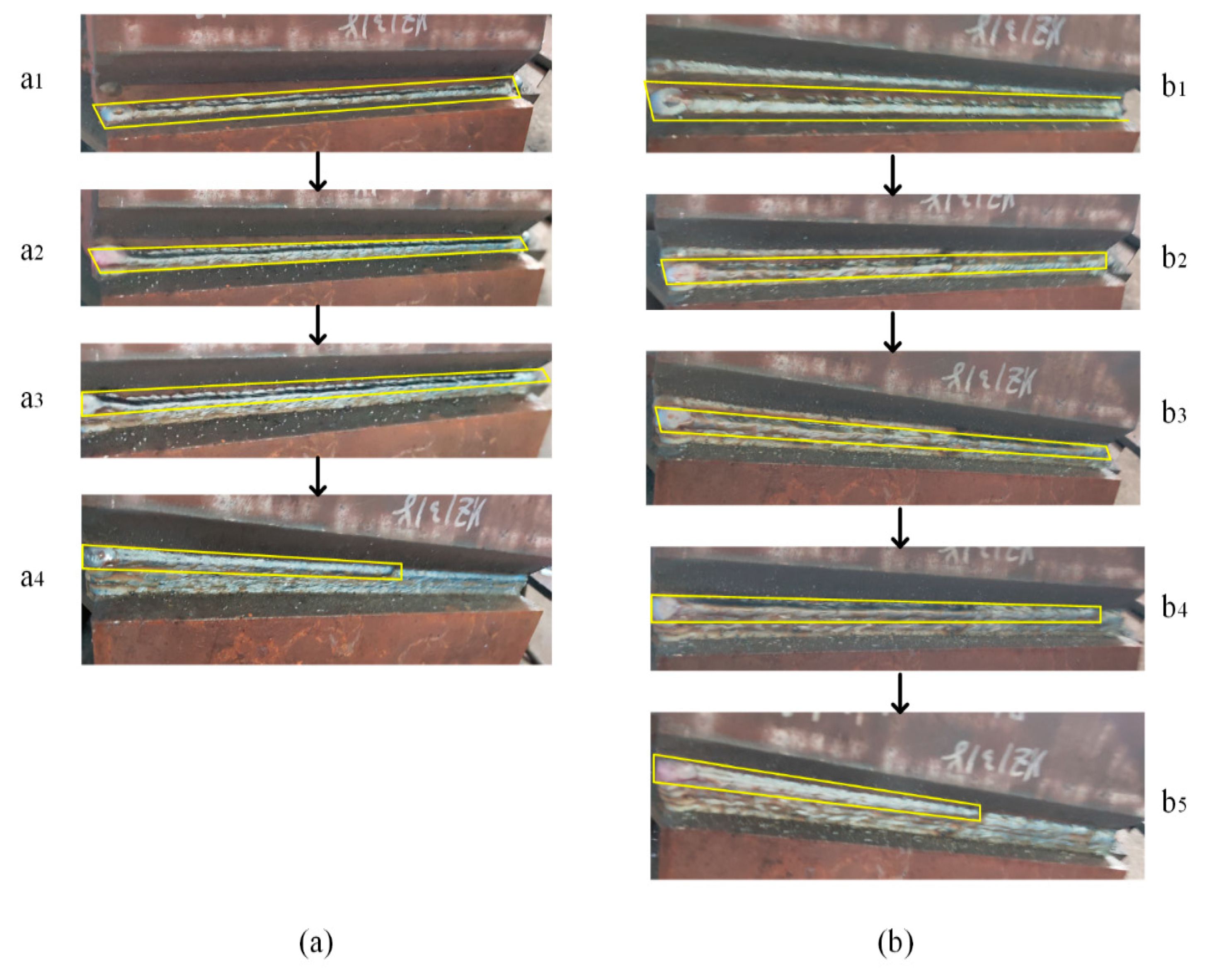

| Detection Scheme | Advantages | Disadvantages |
|---|---|---|
| Contact measurement | Simple principle | Tedious process, Low accuracy |
| Binocular vision | Efficient | Complex algorithm, Large equipment |
| Time of flight | Fast response time | Weak anti-interference ability |
| Laser triangulation | High accuracy | Strict range restriction |
| Parameter Indicators | C | Mn | Si | S | P | σs | σb | Δs | Akv |
|---|---|---|---|---|---|---|---|---|---|
| ≤% | ≤% | ≤% | ≤% | ≤% | (MPa) | (MPa) | % | J | |
| Standard | 0.2 | 1.6 | 0.55 | 0.015 | 0.035 | ≥350 | 490–650 | ≥20 | ≥34 |
| Actual | 0.16 | 1.51 | 0.29 | 0.0025 | 0.018 | 437 | 574 | 27 | 205 |
| Weld Type | Welding Wire (mm) | Shielding Gas (L/min) | Electric Current (A) | Voltage (V) | Welding Speed (cm/min) |
|---|---|---|---|---|---|
| Root weld | 1.2 | 35 | 230 | 28 | 35 |
| Filler passes | 1.2 | 40 | 260 | 33 | 35 |
| Specimen Number | σb (MPa) | Bend Diameter | Bend Angle | Notch Location | Akv J |
|---|---|---|---|---|---|
| 001 | 521 | 30 | 180 | Weld bead | 137 |
© 2020 by the authors. Licensee MDPI, Basel, Switzerland. This article is an open access article distributed under the terms and conditions of the Creative Commons Attribution (CC BY) license (http://creativecommons.org/licenses/by/4.0/).
Share and Cite
Lu, H.; Ma, M.; Liu, S.; Alghannam, E.; Zang, Y.; Li, S.; Zhang, W. Visual-Based Multi-Section Welding Path Generation Algorithm. Processes 2020, 8, 821. https://doi.org/10.3390/pr8070821
Lu H, Ma M, Liu S, Alghannam E, Zang Y, Li S, Zhang W. Visual-Based Multi-Section Welding Path Generation Algorithm. Processes. 2020; 8(7):821. https://doi.org/10.3390/pr8070821
Chicago/Turabian StyleLu, Hong, Mingtian Ma, Shu Liu, Essa Alghannam, Yue Zang, Shuo Li, and Weixin Zhang. 2020. "Visual-Based Multi-Section Welding Path Generation Algorithm" Processes 8, no. 7: 821. https://doi.org/10.3390/pr8070821
APA StyleLu, H., Ma, M., Liu, S., Alghannam, E., Zang, Y., Li, S., & Zhang, W. (2020). Visual-Based Multi-Section Welding Path Generation Algorithm. Processes, 8(7), 821. https://doi.org/10.3390/pr8070821







